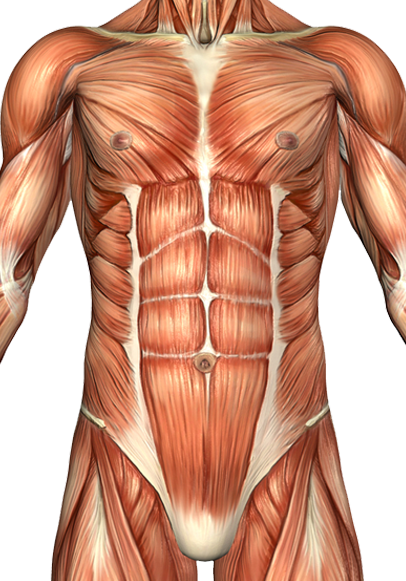Deltoid Muscle
Deltoid is one of the most important muscles of the human shoulder joint. It is a coarse textured, thick and powerful muscle responsible for making the round counter of shoulder. It is so named because its shape resembles an inverted Greek letter called Delta. This muscle is generally divided into three main parts:
-
A unipennate i.e. obliquely arranged fibers inserting into the tendon only at one side, anterior part also known as the Clavicular part of Deltoid.
-
A unipennate posterior part also known as the Spinal part of Deltoid.
-
A multipennate i.e. obliquely arranged fibers inserting into the central tendon from both side, middle part also known as the Acromial part of Deltoid.
These parts can act separately or collectively. When these parts contract separately or in combination, shoulder moves in different manners. These movements are discussed in detail later.
read more
Deltoid Muscle Biceps Brachii Brachioradialis Muscle Palmaris Longus Muscle Extensor Carpi Radialis Longus Muscle Extensor RetinaculumDorsal Interossei Muscle Extensor Carpi Ulnaris Muscle Extensor Digitorum Communis Muscle Extensor Carpi Radialis Brevis Muscle Triceps Brachii Muscle Biceps Brachii Muscle Posterior Brachialis Muscle
Deltoid Muscle
ATTACHMENTS
This muscle has got a proximal and a distal attachment.
-
Proximal attachment: Proximally this muscle has got three attachment points, one point for each portion of deltoid i.e. anterior, posterior and middle. The anterior fibers of deltoid are attached to the lateral one third of Clavicle. The middle mulitpennate fibers are attached to the Acromion process of Scapula. The posterior unipennate fibers are attached to the Spine of Scapula.
-
Distal attachment: The fibers from all three parts of Deltoid move down making the round counter of shoulder, attaching into one single point. That point is the Deltoid tuberosity of Humerus and is termed as the distal attachment of Deltoid.
NERVE SUPPLY
Axillary nerve is the major nerve innervating this muscle. This nerve is a part of Brachial plexus of the nerves of upper limb and its root values are C5-C6.
BLOOD SUPPLY
The blood supply of this muscle comes from the Deltoid branch of Thoracoacromial artery i.e. a branch of Axiallry artery.
ACTIONS
As said earlier, this muscle can act as a whole or its parts can contract individually. The major function of this muscle is abduction. However, all the movements associated with this muscle are discussed as follows:
-
When the anterior part contracts: When the anterior or Clavicular part of Deltoid contracts result is flexion and Medial rotation of Arm.
-
When the middle part contracts: When the middle or Acromial part contracts result is abduction of arm.
-
When the posterior part contracts: When the posterior or Spinal part contracts result is extension and lateral rotation of arm.
-
When the muscle contracts as a whole: When the muscle contracts as a whole result is abduction of arm. In this process the main function is performed by the middle part while the anterior and posterior parts of Deltoid serve to steady the motion of arm.
During the first 15 degrees of abduction, Deltoid is assisted by the Suprapinatus muscles. After the initial 15 degrees assistance by Suprapinatus muscle, Deltoid becomes a fully effective abductor.
CLINICAL POINTS
-
Deltoid is the muscle of choice, in addition to gluteus muscles, for an intra muscular injection.
-
The loss of counter of Deltoid muscle means the damage of Axiallry nerve supplying it.
- To test the function of Deltoid as an abductor or the function of Axillary nerve, the person is asked to abduct his/her arm against resistance. After 15 degrees of motion Deltoid muscle can be appreciated in case of normal muscle function and intact Axiallry nerve.
Report Error



